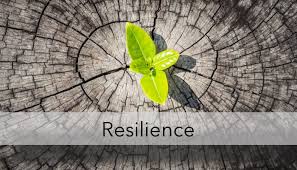Factors in Resilience
 A combination of factors contributes to resilience. Many studies show that the primary factor in resilience is having caring and supportive relationships within and outside the family. Relationships that create love and trust, provide role models and offer encouragement and reassurance help bolster a person’s resilience.
A combination of factors contributes to resilience. Many studies show that the primary factor in resilience is having caring and supportive relationships within and outside the family. Relationships that create love and trust, provide role models and offer encouragement and reassurance help bolster a person’s resilience.
Several additional factors are associated with resilience, including:
- The capacity to make realistic plans and take steps to carry them out.
- A positive view of yourself and confidence in your strengths and abilities.
- Skills in communication and problem solving.
- The capacity to manage strong feelings and impulses.
All of these are factors that people can develop in themselves.
Strategies For Building Resilience
 Developing resilience is a personal journey. People do not all react the same to traumatic and stressful life events. An approach to building resilience that works for one person might not work for another. People use varying strategies.
Developing resilience is a personal journey. People do not all react the same to traumatic and stressful life events. An approach to building resilience that works for one person might not work for another. People use varying strategies.
Some variation may reflect cultural differences. A person’s culture might have an impact on how he or she communicates feelings and deals with adversity — for example, whether and how a person connects with significant others, including extended family members and community resources. With growing cultural diversity, the public has greater access to a number of different approaches to building resilience.
Some or many of the ways to build resilience in the following pages may be appropriate to consider in developing your personal strategy.
10 ways to building Resilience

